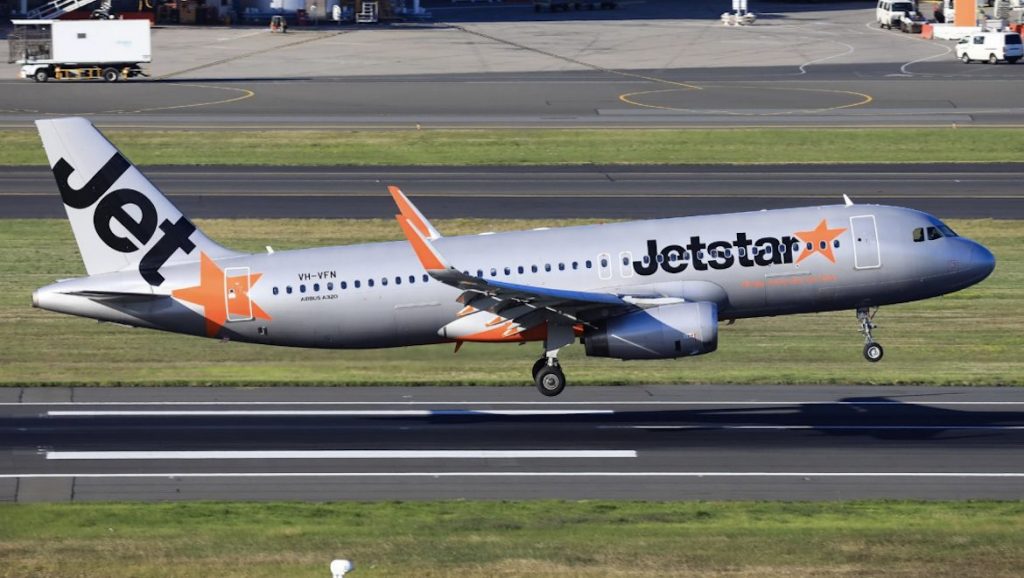
A malfunction in the main landing gear of a Jetstar Airbus A320 that was unable to fully retract was caused by a fatigue failure and a manufacturing flaw of one of the landing gear’s apex pins, the ATSB has said.
A report into the 2019 incident that saw a Jetstar flight from Sydney promptly return to its departure point shortly after take-off has now been finalised by the Australian Transport Safety Bureau (ATSB).
The aircraft, VH-VFN, was travelling to the Gold Coast on 1 August 2019 when flight crew were alerted that the plane’s main landing gear had not retracted completely shortly after take-off.
The crew promptly alerted air traffic control and requested instruction on where they could troubleshoot the issue.
The aircrew attempted to return the landing gear to the extended position and then again attempted to retract it, however the issue persisted.
Simultaneously, the crew of another aircraft taxiing at Sydney Airport identified an object on the ground which they reported to the air traffic control ground controller. The item was later identified as being an apex pin from an A320’s landing gear.
Following this, ATC informed the A320’s flight crew that an aircraft part had been found on the runway they departed from, stating that “they believe it might be a part of the landing gear”, while separately, Jetstar engineering communicated to the crew that the part had not yet been positively identified.
Jetstar engineering informed the crew to follow their standard operating procedures and return to Sydney following all appropriate checks.
The flight crew requested emergency services be put on local standby, given they were unaware of how the malfunctioning landing gear could impact their landing, and at the time, still unaware of which component of the landing gear was damaged or missing.
The landing was ultimately uneventful, and the plane landed safely, however, it did result in further damage to the gear, including the loss of brakes and the severing of electrical sensors, the ATSB found.
ATSB director of transport safety Stuart Macleod said the crew could have been better informed about the state of the damage to the landing gear before an attempt to land was made, as engineering personnel were still gathering and analysing information about the failed component as the plane landed back at Sydney.
“Despite the failed part and aircraft being positively identified by elements within Jetstar, a message was unable to be conveyed to the flight crew before they returned for landing,” Macleod said.
“As such, the flight crew was unaware of the true nature of the undercarriage defect and the associated risks, and that additional information would have better-informed crew decision making.”
According to the ATSB, without the apex pin in place, the main landing gear axle could rotate out of alignment, which is likely what prevented the landing gear from retracting and caused damage to other landing gear components and systems during the taxi, take-off and landing, including disabling the left side main landing gear’s brakes.
While the disconnected torque link reduced the directional stability and braking performance, the degradation was manageable and the aircraft landed safely, the ATSB said.
“Investigations determined that the fatigue failure of the apex pin was the result of a crack that initiated during the quench step of the heat treatment process at manufacture,” Macleod noted.
The failed apex pin shank was later sent to A320 aircraft main landing gear manufacturer Safran Landing Systems, which concluded the cracks were initiated during the manufacturing process and were not caused by environmental effects in service.
Following the incident, Airbus issued an alert to A320 operators requiring the recall or inspection of 1,988 apex pins – as a result, 19 pins were removed from service due to cracking.
Safran had previously revised its manufacturing processes for the apex pin.
Also, in response to the incident, Jetstar clarified its non-normal operational communication guidance for ground crews in the Airport Operations Manual. This included dedicated phraseology for gaining priority on airband frequencies to relay high priority messages.
“This investigation highlights the importance of ensuring that operational processes permit coordinated, accurate and timely flow of information between ground personnel and flight crew to assist airborne decision making,” Macleod concluded.















